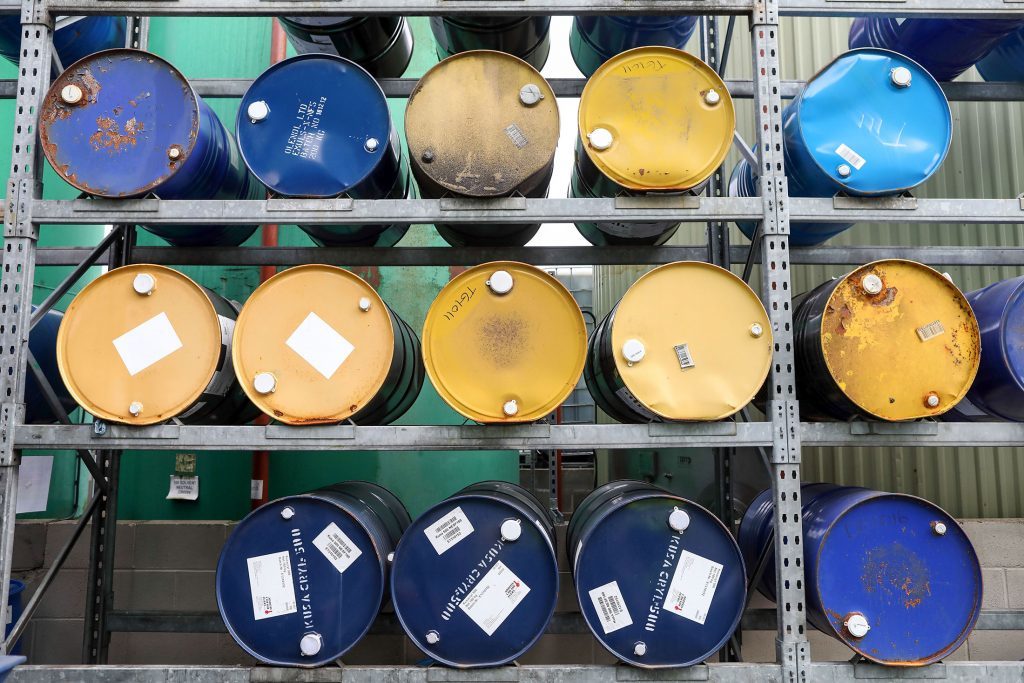
Oil dipped below $55 a barrel in London after the U.S. Federal Reserve raised interest rates, stoking fears over economic growth at a time when investors face a supply glut.
Brent crude futures slid as much as 4.5 percent to the lowest since September 2017. Traders are avoiding risk assets as Chairman Jerome Powell failed to quell concerns the Fed’s policy will choke global growth. Meanwhile, inventories at a key U.S. storage hub rose to the highest level since January, adding to speculation output cuts by OPEC will be undermined by shale supplies.
Crude’s set for its worst quarterly drop in four years despite an accord between OPEC and its allies to cut 1.2 million barrels a day of production from January. While Saudi Arabia’s Energy Minister Khalid Al-Falih said he’s certain the deal will be extended in April, the assurance coming even before the pact has gone into effect only highlighted the prevailing anxiety in the market. Meanwhile, global investors are concerned the Fed isn’t finished raising rates.
“The market had wanted to receive a more definitive signal that the Fed is done boosting rates and it fell short of satisfying investors,” Kim Kwangrae, a commodities analyst at Samsung Futures Inc. in Seoul, said by phone. “The market continues to battle with uncertainties over a supply glut and slowing growth.”
Brent for February settlement dropped as much as $2.60 to $54.64 a barrel on London’s ICE Futures Europe exchange. The contract rose 1.7 percent to close at $57.24 on Wednesday. The global benchmark crude traded at a $8.97 premium to West Texas Intermediate.
WTI for February delivery lost as much as $1.38 to $45.82 a barrel on the New York Mercantile Exchange. The January contract expired on Wednesday after gaining 96 cents to $47.20. Total volume traded Thursday was about 30 percent above the 100-day average.
Stockpiles at Cushing rose for a fourth consecutive week by 1.09 million barrels last week, Energy Information Administration data showed Wednesday. While nationwide inventories shrank by 497,000 barrels last week, the drop was smaller than a 2.5 million-barrel decrease expected in a Bloomberg survey of traders.
On Wednesday, Minister Al-Falih said the current price dip isn’t based on supply and demand of oil, but stems in part from factors including geopolitics, U.S. interest rates, the strength of the greenback and investor speculation. Still, he added that the group will “need more time” for production curbs to balance the market.
In America, policy makers scaled back the number of rate increases they expect next year to two, from three in September, according to their median forecast. That’s still more than what investors expect. Powell repeatedly called the outlook for next year “positive,” though the central bank did slightly lower the forecast for growth in 2019 to 2.3 percent from 2.5 percent in September.
Other oil-market news Russian Deputy Prime Minister Dmitry Kozak and Energy Minister Alexander Novak discussed the country’s domestic fuel market and crude output with oil executives at a meeting in Moscow, according to two people familiar with the matter, who spoke on condition of anonymity. OPEC’s bold strategy to revive oil markets proved a surprise success last year, but the sequel they’ve unveiled for 2019 is getting a cooler reception.
Recommended for you
